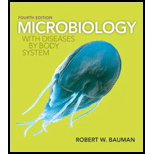
Concept explainers
1.
To answer:
The different hypersensitive reactions.
Concept introduction:
Hypersensitivity is the body’s defense mechanism to an allergen, autoimmunity, and venom. The allergen can be of pollen, mold, and chemicals. Poison ivy and bee-stings inject venom into the body. There are totally four types of hypersensitivity depending on the state of the allergen.
2.
Concept introduction:
Hypersensitivity is the body’s defense mechanism to an allergen, autoimmunity, and venom. The allergen can be of pollen, mold, and chemicals. Poison ivy and bee-stings inject venom into the body. There are totally four types of hypersensitivity depending on the state of the allergen.
3.
Concept introduction:
Hypersensitivity is the body’s defense mechanism to an allergen, autoimmunity, and venom. The allergen can be of pollen, mold, and chemicals. Poison ivy and bee-stings inject venom into the body. There are totally four types of hypersensitivity, depending on the state of the allergen.
4.
Concept introduction:
Hypersensitivity is the body’s defense mechanism to an allergen, autoimmunity, and venom. The allergen can be of pollen, mold, and chemicals. Poison ivy and bee-stings inject venom into the body. There are totally four types of hypersensitivity, depending on the state of the allergen.
Want to see the full answer?
Check out a sample textbook solution
Chapter 18 Solutions
Microbiology with Diseases by Body System (4th Edition)
- please draw in what the steps are given. Thank you!arrow_forwardplease draw in and fill out the empty slots from image below. thank you!arrow_forwardThere is a species of eagle, which lives in a tropical forest in Brazil. The alula pattern of its wings is determined by a single autosomal gene with four alleles that exhibit an unknown hierarchy of dominance. Genetic testing shows that individuals 1-1, 11-4, 11-7, III-1, and III-4 are each homozygous. How many possible genotypes among checkered eagles in the population?arrow_forward
- students in a science class investiged the conditions under which corn seeds would germinate most successfully. BAsed on the results which of these factors appears most important for successful corn seed germination.arrow_forwardI want to write the given physician orders in the kardex formarrow_forwardAmino Acid Coclow TABle 3' Gly Phe Leu (G) (F) (L) 3- Val (V) Arg (R) Ser (S) Ala (A) Lys (K) CAG G Glu Asp (E) (D) Ser (S) CCCAGUCAGUCAGUCAG 0204 C U A G C Asn (N) G 4 A AGU C GU (5) AC C UGA A G5 C CUGACUGACUGACUGAC Thr (T) Met (M) lle £€ (1) U 4 G Tyr Σε (Y) U Cys (C) C A G Trp (W) 3' U C A Leu בוט His Pro (P) ££ (H) Gin (Q) Arg 흐름 (R) (L) Start Stop 8. Transcription and Translation Practice: (Video 10-1 and 10-2) A. Below is the sense strand of a DNA gene. Using the sense strand, create the antisense DNA strand and label the 5' and 3' ends. B. Use the antisense strand that you create in part A as a template to create the mRNA transcript of the gene and label the 5' and 3' ends. C. Translate the mRNA you produced in part B into the polypeptide sequence making sure to follow all the rules of translation. 5'-AGCATGACTAATAGTTGTTGAGCTGTC-3' (sense strand) 4arrow_forward
- Essentials of Pharmacology for Health ProfessionsNursingISBN:9781305441620Author:WOODROWPublisher:Cengage





